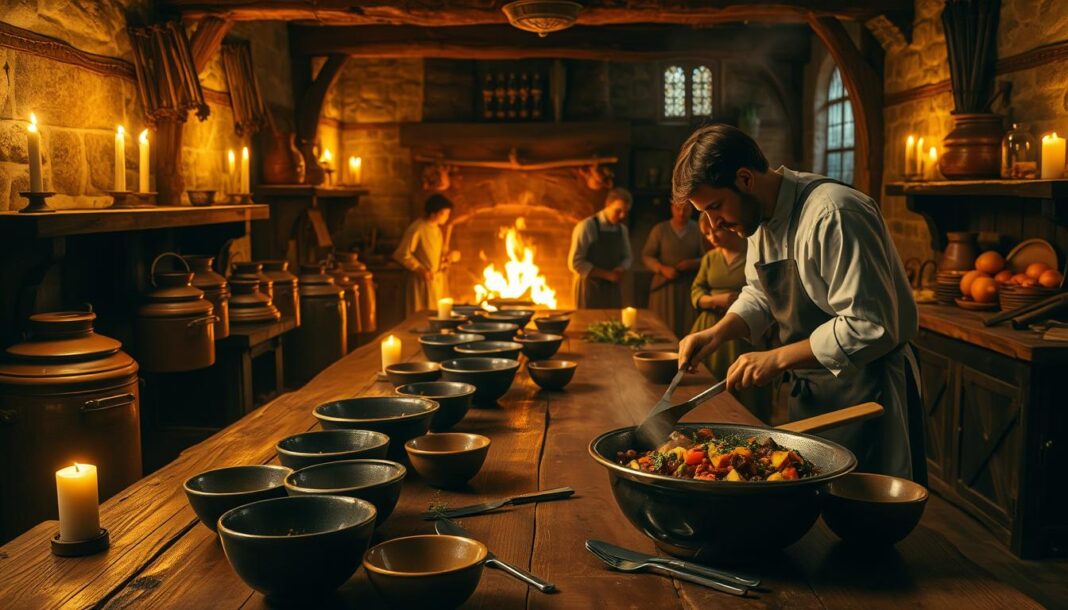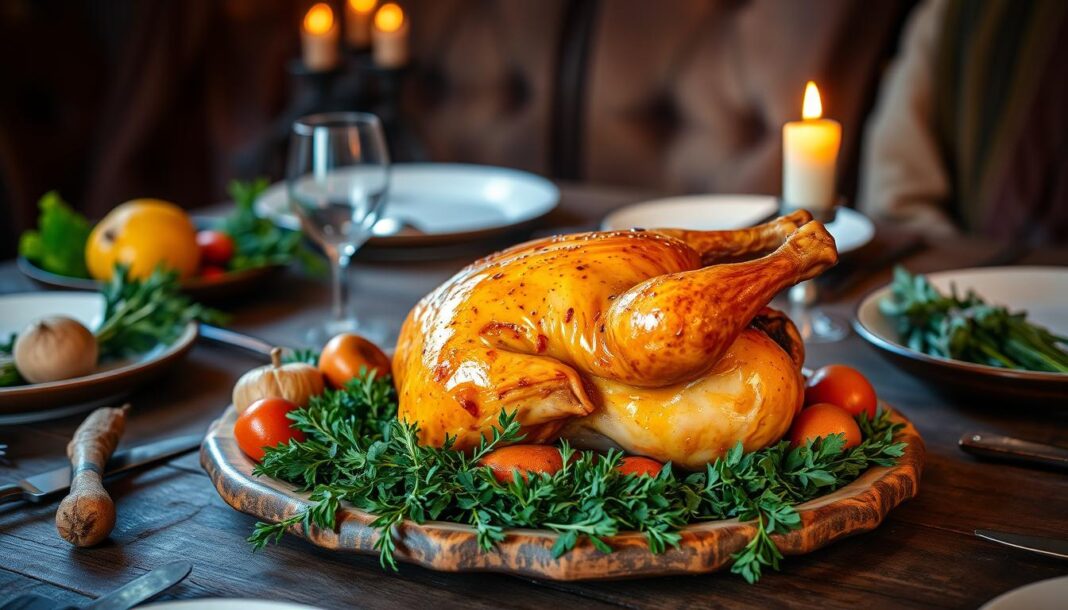We’re delving into the fascinating world of medieval cuisine with our exploration of bruet, a historical dish that has intrigued food historians for centuries. The term encompasses a variety of medieval soups and stews, with regional variations appearing throughout European culinary manuscripts from the 13th-15th centuries.
Our research draws from authentic historical sources, including the Harleian manuscript 279 (circa 1420), which provides valuable insights into how these dishes were prepared using ingredients like almond milk and rice. Understanding the historical context of bruet preparation helps us appreciate the ingenuity of medieval cooks who created flavorful dishes despite significant ingredient limitations.
Key Takeaways
- Understanding the historical context of medieval soups and stews.
- Exploring the use of alternative ingredients like almond milk during Lenten periods.
- Learning techniques for thickening soups with rice or flour.
- Gaining practical skills to recreate authentic medieval recipes.
- Appreciating the cultural significance of bruet in medieval cuisine.
Understanding Bruet: A Medieval Delicacy
Medieval cooks employed the term ‘bruet’ to describe a category of dishes characterized by their thickened liquid base. This broad definition encompasses a variety of preparations, from meat-based stews to vegan alternatives.
What is Bruet?
Bruet is defined as a category of medieval dishes that typically featured a thickened liquid base. Historical sources reveal considerable variation in what constituted a “true” bruet, with preparations ranging from simple to complex. The etymology of “bruet” likely derives from Old French, with connections to modern terms for broth and brewing.
The Historical Significance of Bruet in Medieval Cuisine
The historical significance of bruet extends beyond mere sustenance; these dishes often served as status symbols at medieval feasts. Bruet recipes evolved regionally, with distinct variations appearing in English, French, and German culinary traditions. For instance, on fish days, cooks might prepare a bruet using almond milk and rice flour as thickening agents, as seen in the Bruet of Almaynne in Lente recipe.
| Region | Typical Ingredients | Occasion |
|---|---|---|
| English | Meat, vegetables | Feasts |
| French | Fish, almond milk, rice flour | Fish days |
| German | Local herbs, meat or fish | Special occasions |
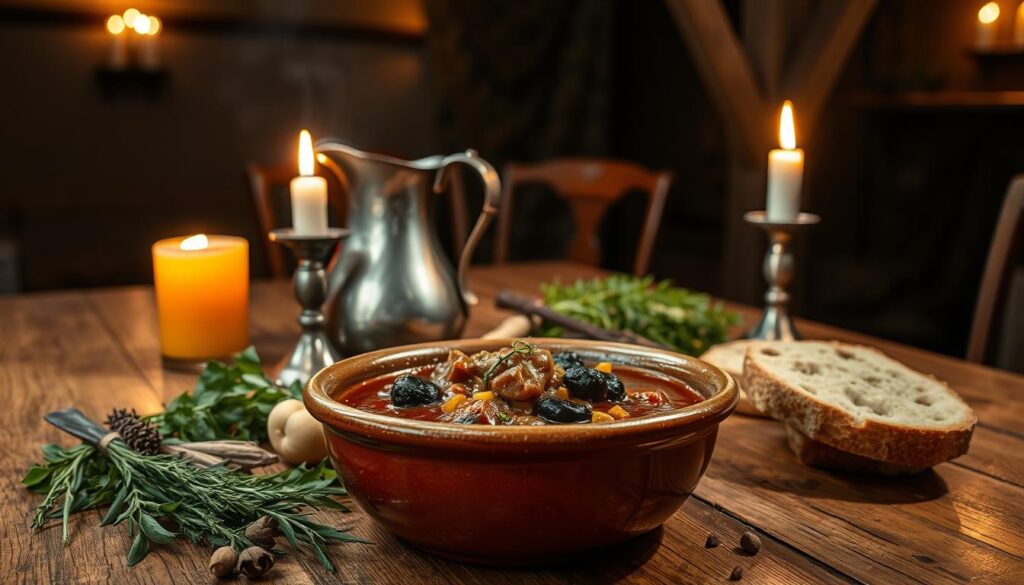
The Religious Context of Medieval Cooking
Medieval cooking was heavily influenced by the religious dietary restrictions imposed by the Catholic Church. The Church’s fasting rules significantly shaped the culinary landscape, creating a culture of innovation around meatless dishes.
Lenten Dietary Restrictions
The Catholic Church declared Wednesdays, Fridays, and Saturdays as meatless “fast” days, prohibiting the consumption of flesh and products from land-dwelling animals. This meant no meat, chicken, eggs, or dairy products were allowed. As a result, cooks turned to alternative ingredients like almond milk and rice flour to create satisfying meals.
How Almond Milk Became a Crucial Substitute
Almond milk emerged as a versatile substitute for dairy milk in various dishes, including bruet. Medieval cooks developed sophisticated techniques to create almond milk by grinding almonds with water and straining the mixture through cloth. Rice flour was another essential ingredient, providing thickening power without using eggs or dairy. The use of these ingredients not only complied with the dietary restrictions but also opened new culinary possibilities.
| Ingredient | Use in Medieval Cooking | Relevance to Bruet |
|---|---|---|
| Almond Milk | Substitute for dairy milk | Used in Bruet of Almaynne |
| Rice Flour | Thickening agent | Added texture to Bruet |
| Rice | Base ingredient | Used in various medieval pottages |
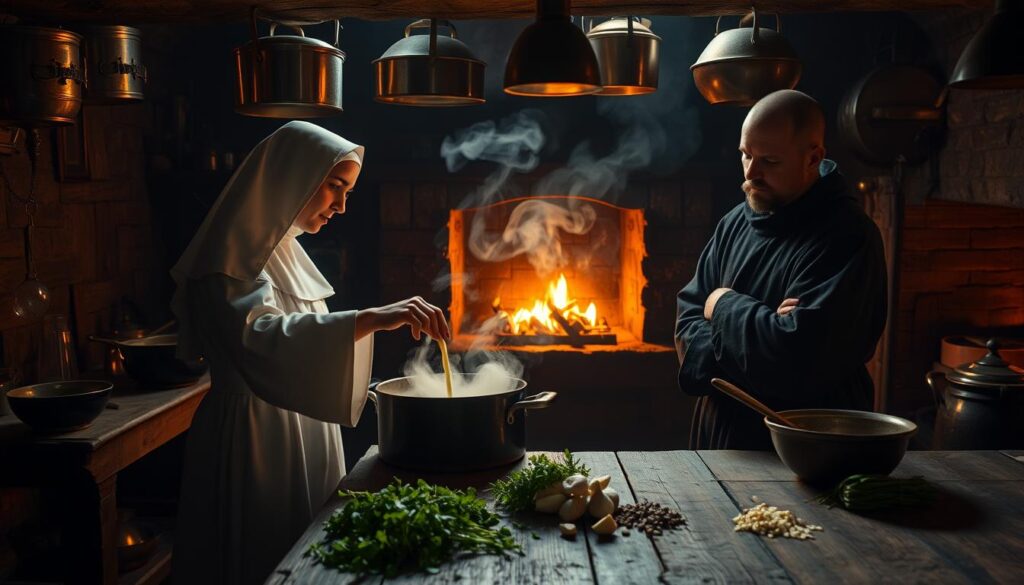
Authentic Bruet of Almaynne Recipe
In our journey to recreate historical dishes, the Bruet of Almaynne stands out as a fascinating challenge. This medieval delicacy, rooted in Lenten dietary restrictions, offers a unique glimpse into the culinary practices of the past.
Traditional Ingredients
The traditional ingredients for Bruet of Almaynne are remarkably simple, yet crucial for its authentic flavor and texture. We recommend using 1¼ cups of unsweetened almond milk, 2-3 finely minced dates, 2 tablespoons of sugar, and 1 tablespoon of rice flour.
Step-by-Step Cooking Instructions
To prepare the bruet, combine almond milk and sugar in a pot, heating until the sugar dissolves. Add minced dates and cook further. In a separate bowl, mix rice flour with a small amount of the hot liquid to prevent lumps. Add this mixture to the saucepan, bringing it to a boil before simmering for 5-10 minutes.
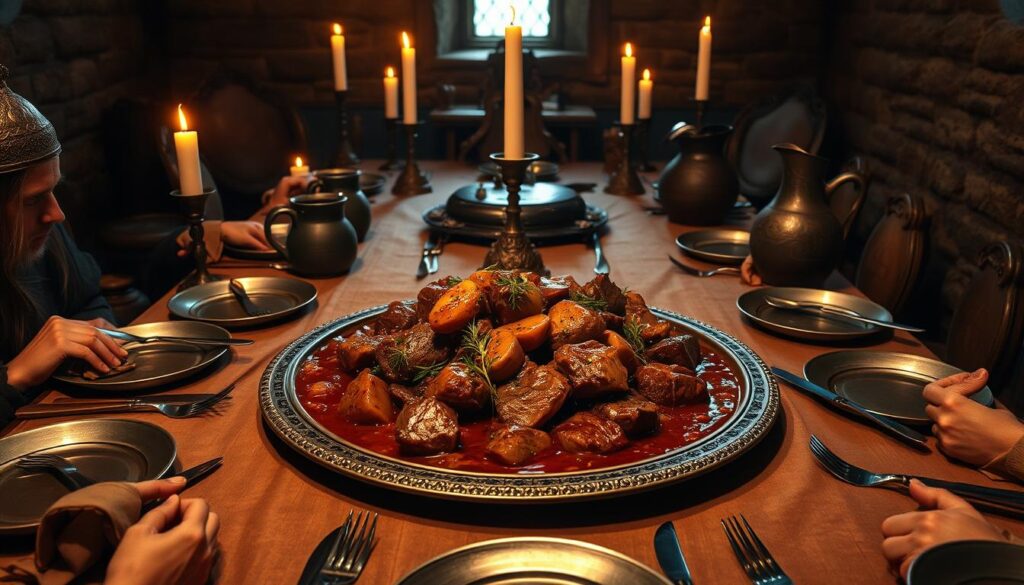
Tips for Perfect Consistency
To achieve the desired “running” consistency, whisk periodically during cooking and avoid overcooking. The bruet will thicken slightly as it cools. A final sprinkle of sugar adds sweetness and visual appeal to this unique medieval recipe.
Conclusion: Experiencing Medieval Cuisine Today
The Bruet of Almaynne recipe offers a unique window into the past, revealing the resourcefulness of medieval cooks within dietary restrictions. By using ingredients like almonds, rice, and dates, they created flavorful dishes that were both nourishing and compliant with Lenten dietary rules. We encourage you to try this authentic medieval recipe, adapting it to your taste while respecting its historical context. As you savor the subtle sweetness and unique texture of Bruet, you’ll appreciate the ingenuity of medieval cuisine. This culinary journey opens new perspectives on the simplicity and elegance of historical cooking.
